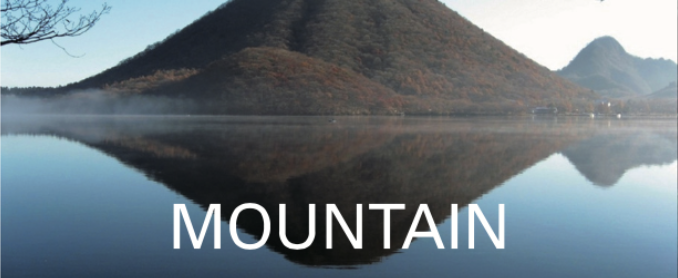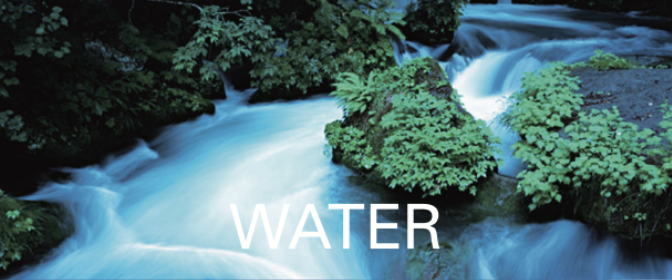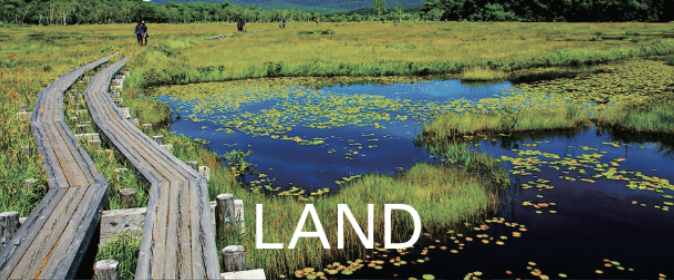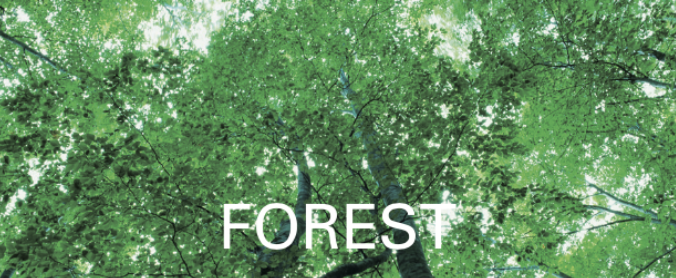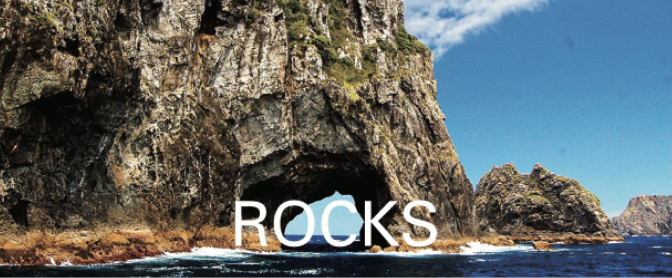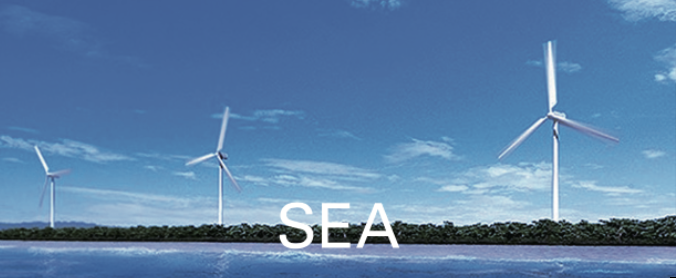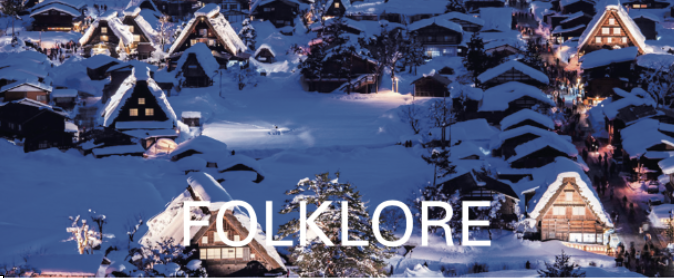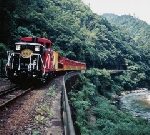
Tamba Province had supported the Heiankyo Capital of Kyoto by sending products such as wood, firewood and charcoal. The wood was delivered by rafts down the Hozu River. Suminokura Ryoi (1554 – 1614), a wealthy merchant and shipper of overseas trade, took care of the development of Hozukyo Gorge, in the Keicho era (1596 – 1615) of the Edo period.
Althoough Ryoi developed the Fuji River in Yamanashi and the Tenryu River in Nagano, it was extremely difficult for him to develop the Gorge, which had the mythology of Okunushi no Mikoto, the deity of magic and medicine, and the original the ruler of Izumo Province, Shimane, who was enshrined at Izumo Grand Shrine.
A railway was laid in 1899 in the difficult Gorge, and the trolley replaced the Takasebune, flatboat of Ryoi. It was a symbol that the days had changed from the early modern times to the modern times.
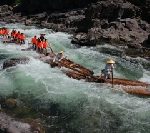
The Kitayamagawa River flows to Kumano-nada Sea from Mt. Odaigahara, which is one of the world’s most rainy areas, to Kumano Sea. The beauty of the 31km long Gorge was created by repeated erosion.
In Kitayama village, the wood cut went down the Kitayamagawa River, by rafts, to Shingu City since ancient times. The rafting was reproduced in 1979, for sightseeing. It used to ship wood to the mouth of the river.
It is the only river rafting in Japan, where you can experience the causality of inevitability and the contact of by-chance.
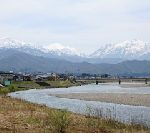
This Quasi-National Park spans Niigata and Fukushima prefectures. The unexplored region of Okudami is a spectacular view and the gateway to Ozenuma Pond. The source of the Tadamigawa River is Ozenuma Pond, which flows west.
The artificial lake, Okutadamiko Lake has a forest of beech, which is widely distributed on the Sea of Japan side and is said to have great healing power, due to its capacity to hold water.
The artificial lake of the site used to be the silver mine of the Shogun demesne in the Edo period (1603 – 1868). It is also called Ginzan Lake –silver mine lake.

The Kurobe Gorge is a deep V-shaped gorge that rises in the upper and middle reaches of the Kurobe River. It originated from Mt. Washibatake in the central part of the Northern Alps. The trolley railway began in 1937, with the development of power resources in the Gorge. Since then, it has been crowded with people who have been fascinated by the unexplored region.
Maeda Tsunanori (1643 – 1724), the 4th lord of the Kaga Domain, made the Aimotobashi Bridge, on the Kurobe River, which was one of three unusual bridges in Japan. The part of the restored model of the Aimotobashi Bridge is exhibited at Kurobe City Museum of History and Folklore. It conveys the history of regional innovation.
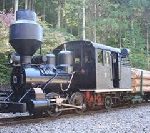
In 1916, a forest railway to transport timber, instead of rivers, had run through Kiso Mountains. The steam locomotive at that time was an original train of this railway. It used wood chips, instead of coal, and had a smoke tube in the style of a hat like a Moai statue. The smoke tube created a swirling air flow inside, dropping the sparks down.
After the forest was converted into a park as the first Natural Recreation Forest in Japan, the forest railway was revived as a sightseeing train. The steam locomotive is also open to the public in the park.
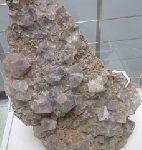
The Kishu mine is part of the Kii Kumano Copper Mine, which used to mine silver, during the Nara period (710-794). At that time, copper mining began. The Kishu mining offered copper for the Todaiji Great Buddha casting. There were up to 40 mines during the Edo period (1603 – 1868).
This museum exhibits the Kishu mine history from the Edo period to the Showa period (1926 – 1989), using real objects and models. This museum also has ore collected from around the world, in addition to the ore produced here at that time, including the largest piece of fluorite in Japan.
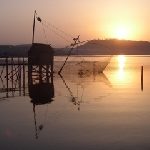
This lake is in the center of Tottori prefecture, which is called Tsuru no Umi – the crane-shaped lake, and is one of Eight Views of Sanin region – Tottori, Shimane, and Yamaguchi Prefectures. It is a brackish lake with a circumference of 12 km and a depth of 2 to 7 m, which leads to the Sea of Japan. Seawater flows backwards in the summer, so there are plenty of Japanese pond smelt, icefish, carp, crucian carp and eel.
The Yotsude Ami, a four-armed scoop net of fishing gear, stretched out at the four corners of the net with bamboo, is the symbol of this lake side, which is pulled up from a hut on the lake shore by pulleys to catch shrimp, Japanese pond smelt and icefish.

The Nakayama River originated from the submarine valley of the Ichizuchisan Mountain Range. There is natural treasure, the exposure of the thrust fault, on the left bank of the lower reaches, from Kurumi Bridge. This Gorge is the Median Tectonic Line that crosses the Japanese archipelago. The exposure occurred from the strong pressure from the north, millions of years ago.
There is the tunnel, Hekigantosuiro in the middle of a major fault on the Median Tectonic Line, which was an irrigation canal and was made with only chisels and hammers over the course of 9 years, in the Edo period (1603 – 1868). It is praised as “Ao no Domon in Iyo province Ehime ”
– Ao no Domon is the Blue Tunnel in Yabakei Gorge, a scenic place of beauty in Nakatsu Oita.
